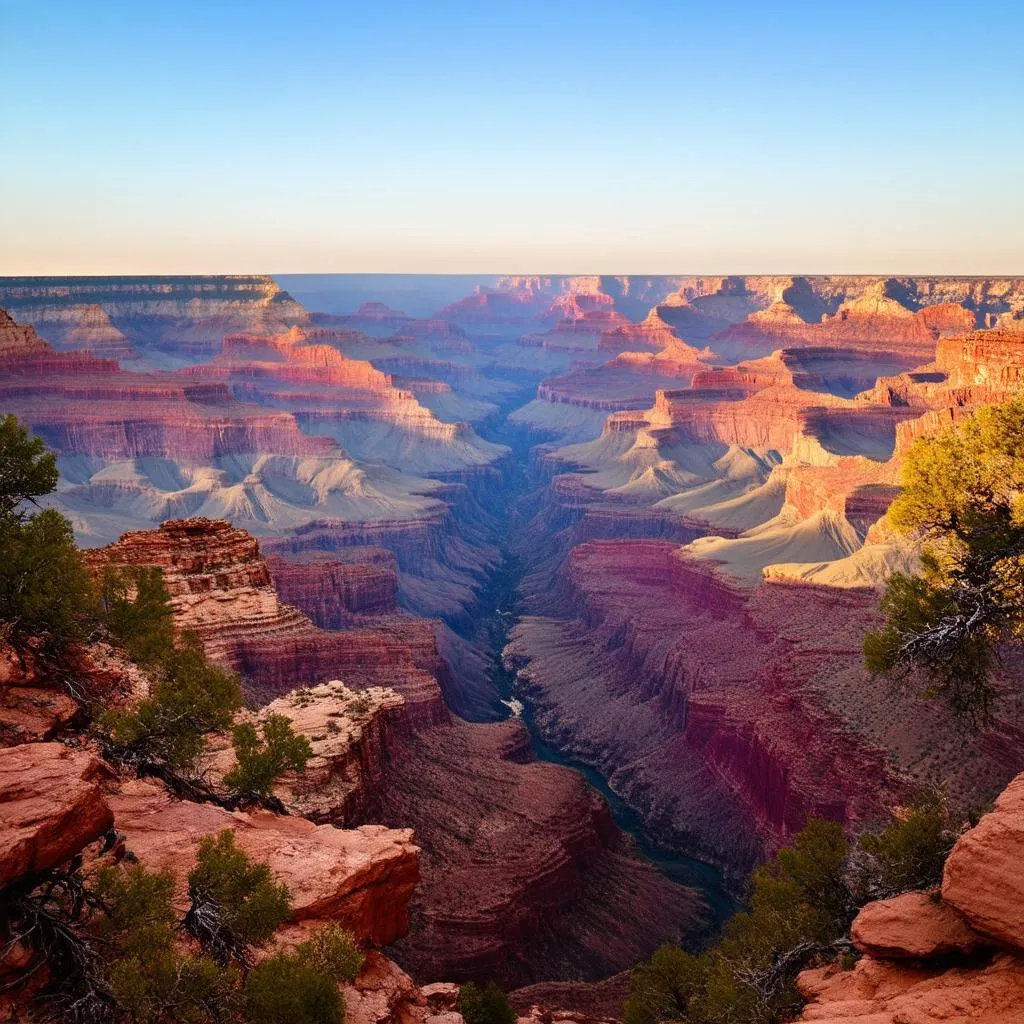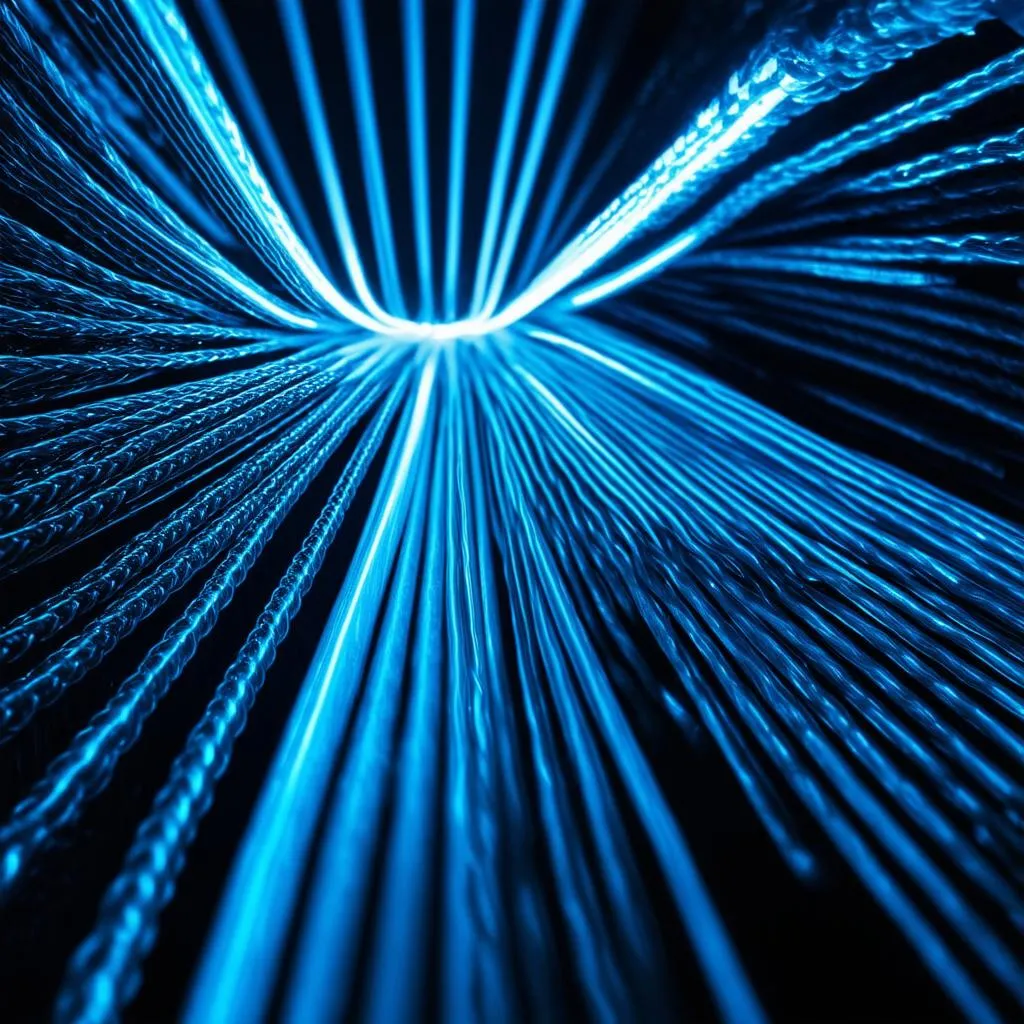Have you ever stood on the edge of the Grand Canyon at sunset, watching the light paint the canyon walls in a thousand shades of orange and red? Or perhaps you’ve strolled down Las Ramblas in Barcelona, mesmerized by the play of light on the colorful mosaics of Antoni Gaudí? We often talk about light in terms of what we see – colors, shadows, reflections. But have you ever stopped to think about what light is and how it travels?
The answer, it turns out, is a bit of a head-scratcher: light travels in waves, but it also behaves like a stream of particles. How can something be two things at once? Let’s dive into the fascinating world of light and waves.
Understanding Waves
Before we unpack the dual nature of light, let’s first get a handle on what we mean by “waves.”
Imagine tossing a pebble into a still pond. You’ll see ripples, or waves, spreading outward from where the pebble broke the surface. These waves are disturbances that carry energy across the water’s surface.
Waves have a few key characteristics:
- Wavelength: The distance between two consecutive peaks (or troughs) of a wave.
- Frequency: The number of waves that pass a fixed point per second.
- Amplitude: The height of a wave, which corresponds to its intensity or energy.
Sound, too, travels in waves – think of the vibrations you feel from a bass drum or the crash of thunder echoing through a valley.
Light: A Wave…and a Particle?
Now, back to light. In the 19th century, physicist James Clerk Maxwell developed equations that described light as electromagnetic waves – disturbances in electric and magnetic fields that travel through space.
This wave theory of light explained many observed phenomena, like diffraction (the bending of light around obstacles) and interference (the way light waves can interact to create bright and dark patterns).
However, in the early 20th century, scientists like Albert Einstein observed that light could also behave like a stream of particles, called photons. This discovery led to the development of quantum mechanics, which revolutionized our understanding of the universe at the atomic and subatomic levels.
The Duality of Light: A Wave-Particle Paradox
So, how can light be both a wave and a particle? This concept, known as wave-particle duality, is one of the most mind-bending ideas in physics. It suggests that light doesn’t neatly fit into our everyday categories of “wave” or “particle.” Instead, it possesses characteristics of both.
Think of it like this: imagine exploring a new city. You could walk its streets on foot, experiencing the city block by block, building by building. Or, you could take to the skies in a helicopter, getting a broader perspective of the city’s layout and landmarks. Both experiences offer valuable insights into the city’s nature, even though they are vastly different.
Similarly, light can be described as both a wave and a particle, depending on how we observe it.
Light and Travel: From Sunbeams to Fiber Optics
Our understanding of light as a wave has revolutionized the way we travel and communicate. Here are just a few examples:
- Photography: Cameras use lenses to bend and focus light waves, capturing images on film or digital sensors.
- Fiber optics: Information is transmitted at lightning speeds through thin glass fibers using pulses of light. Just imagine, you could be sharing travel photos from the bustling markets of Marrakech to your friends back home in a matter of seconds!
- Radio and television: Electromagnetic waves carrying radio and TV signals are transmitted through the air, allowing us to stay connected and entertained no matter where we are in the world.
Traveling with Light: A Feng Shui Perspective
In Feng Shui, light is associated with yang energy – active, vibrant, and life-giving. When we travel, we often seek out well-lit spaces, whether it’s a sun-drenched café in Paris or a brightly lit market in Bangkok. These spaces naturally uplift our mood and boost our energy levels.
Consider these tips for incorporating the principles of light and Feng Shui into your travels:
- Choose accommodations with ample natural light: Look for hotels or guesthouses with large windows or balconies that let in plenty of sunshine.
- Seek out outdoor experiences: Spend time in nature, basking in the warmth of the sun, whether it’s hiking a coastal trail in Big Sur or strolling through a botanical garden in Singapore.
- Be mindful of artificial lighting: In the evenings, opt for soft, warm lighting in your hotel room to promote relaxation and restful sleep.
 Light Waves at the Grand Canyon
Light Waves at the Grand Canyon
FAQs About Light and Waves
1. Does light travel faster than sound?
Yes, light travels much faster than sound. In fact, the speed of light in a vacuum (approximately 299,792,458 meters per second) is a universal constant, while the speed of sound varies depending on the medium it’s traveling through.
2. How do we see color?
We perceive color because our eyes are sensitive to different wavelengths of light. For example, we see red when an object reflects light with longer wavelengths and absorbs other colors.
3. Can light travel through a vacuum?
Yes, unlike sound, light doesn’t need a medium to travel. It can propagate through the vacuum of space, which is how we receive sunlight here on Earth.
 Fiber Optic Cables Transmitting Data
Fiber Optic Cables Transmitting Data
Embracing the Journey of Discovery
So, the next time you find yourself captivated by a stunning sunset or marveling at a rainbow arcing across the sky, remember that you’re witnessing the incredible dance of light waves. Just like our journeys across the globe, light’s journey is a testament to the wonders of the natural world, full of beauty, complexity, and endless opportunities for exploration.
If you’re interested in delving deeper into the science of sound and travel, check out our article on how far sound travels.
We’d love to hear from you! Share your thoughts, questions, and travel experiences in the comments below. And be sure to visit travelcar.edu.vn for more travel inspiration and insights.